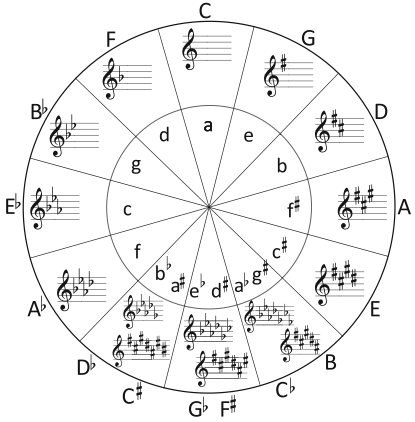
By. Sebastian Gomez
One quick and easy way to spice up a piece of music is by re-harmonization.
What is re-harmonization? For simplicity, we can define it as swapping the chords in a song with new ones to create a different sound. This technique is used often in jazz music and can seem overly complicated.
We’re going to learn a shortcut today!
The Quick and Easy Re-Harm!
If you’ve ever heard Mary had a Little Lamb or Twinkle Twinkle Little Star played in a minor/sad key, then you know what I’m talking about.
Let’s try to reharm Twinkle Twinkle. Learn the notes and chords first. If you can read the sheet music, try saying the notes out loud, it’ll help later on.

Got that? Now the fun part; we’re going to replace the chords with other chords in the same scale.
Here it is starting on an E minor chord:

Here’s how i got that. In our tool box for this hack we just need the notes in our original scale, G major:
G A B C D E F#
The chords in G Major would be G – Am – Bm – C – D – Em – F#dim.
Twinkle Twinkle is a classic I – IV – V progression, which means we’re playing the G – C – D:
1 2 3 4 5
G a b C D
If we wanted a minor sound (like i did with E minor), we would start on one of the minor chords in the key and count up:
1 2 3 4 5
E f g A B
In the key of G major, E, A, and B are all minor chords.
The process is the same no matter where you to start. From C, the chords you’d use would be C – F#dim – G, or starting on B you would use Bm – Em – F#dim.
Each new set of chords creating a new and fresh sound.
To my ear, re-harmonizing to Em or to C sound the best.
The theory behind this is simple. The two other Triads (3 note chord) that have our starting note, G, are Em and C.
You can even try forming your own progression, and let your ears guide you. Jump around the chords in the G major and see what you like. Here’s one I really like, I’ve replaced the F# for an F to make it sound smoother:

But there’s an even easier shortcut to re-harmonize that I like to call:
The Musical Mood Ring!

You’re probably familiar with this guy, and you’re probably ran away from it your whole musical life. But today we’re going to demystify the Circle of Fifths.
Starting on our original key, G, we can highlight the notes to its left and to its right, and we automatically get its VI (C) and its V (D):

Or if we try that with our first reharm example, Em, to its left is Am, and to its right is Bm:

Each new note reveals a new mood, emotion, and feeling as you change out the chords. Some sad, some happy, some mysterious and eerie.
By now you’ve probably got the pattern down; moving to the right along the Circle of Fifths, the notes go up by fives:
C D E F G
1 2 3 4 5
To the left, they move up by fouths:
C D E F
1 2 3 4
And there you have it, the Circle of Fifths and re-harmonization demystified. Try this out on any other song and let your ear guide you through the process. Below I’ve done this with the song Green Hill Zone from Sonic The Hedgehog.
No one wants to learn alone. I’ll be with you every step of the way!
